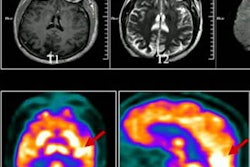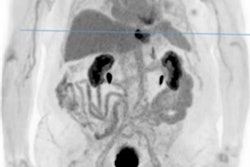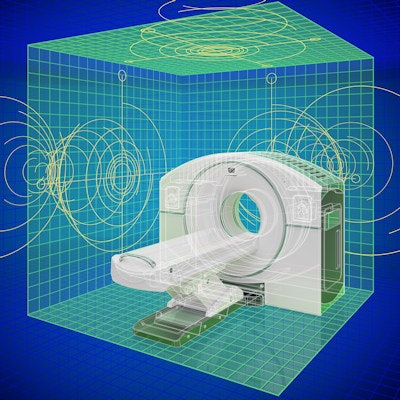
Total-body and long axial field-of-view (LAFOV) PET/CT scanners have the potential to dramatically improve imaging in patients, but can they be considered a revolution in the field? That question was debated during a discussion at ECR 2023 in Vienna.
Moderator Prof. Thomas Beyer, PhD, MBA, of the Medical University of Vienna, noted in his opening remarks that these hybrid PET/CT systems permit multibed, whole-body imaging with PET and CT images acquired in a single examination. The systems (for the purpose of this discussion, all were referred to as "total-body" PET/CT) were first introduced in the early 2020s, with at least three vendors now worldwide.
"What it gets you for sure is an imaging system that covers an extended axial field-of-view of up to two meters. By doing so for the same amount of radioactivity, you increase your volume sensitivity by up to a factor of 40," he said.
The real debate is whether this significant increase in sensitivity can be translated from research where it is primarily currently in use to clinical practice, Beyer noted.
Reducing scan time and radiation dose
With among the highest density of hybrid PET/CT scanners per population in Europe in her department, Dr. Barbara Fischer, PhD, of the University of Copenhagen in Denmark, took up the mantle for the pro argument.
"You can use the increased sensitivity to get improved image quality, you can decrease the radiation to the patient, or you can increase the speed of your examination. You can also try to balance all three aspects," she said.
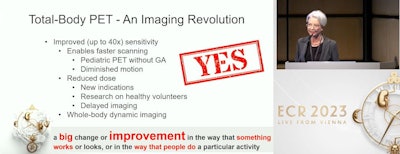 Total-body PET/CT can change the way we do things, Dr. Barbara Fischer, PhD, said.
Total-body PET/CT can change the way we do things, Dr. Barbara Fischer, PhD, said.Small studies have shown that hybrid total-body PET/CT scanners detect the spread of disease better than most current clinical models, but more importantly, the scans also appear to reduce the number of equivocal findings, Fischer said.
"Total-body PET/CT not only enables us to see more, but enables us to see the right thing," she said.
Also, total-body PET/CT scans can be performed in 5 or 10 minutes versus the current clinical standard of 20 minutes without any reduction in image quality. These faster acquisition times may increase clinical production, as well as help minimize patient movement and reduce the use of general anesthesia in children, she said.
Fischer offered an example in a case of a 39-year-old patient who would not normally be a candidate for PET/CT due to radiation concerns. The patient had triple-negative breast cancer that had spread beyond locoregional lymph nodes and was 30-weeks pregnant. Clinicians needed to decide whether to induce premature labor before proceeding with a special type of chemotherapy.
"We were able to plan this scan with an effective dose of 1.4 mSv to the mother and less than 1 mSv to the fetus," she said.
Ultimately, while there is still a lot to learn regarding how clinicians may be able to quantify the dynamic kinetic information hybrid PET/CT scanner offer, the approach has opened new avenues for research areas that can shed light on pathophysiology of diseases and the effects of different interventions, Fischer said.
This includes areas where PET has not previously been applied, such as in obesity, metabolic syndrome, inflammation, and in cancer for predicting patient response to treatment and side effects, she noted.
"Total-body PET/CT offers the potential to change the way we do things, not just more of the same," she concluded.
Revolution or evolution?
On the other hand, total-body PET/CT scanners may not represent as much of a revolution as an evolution in radiology embedded in a "hype cycle," countered Dr. Stephan Nekolla, PhD, of the Technical University of Munich in Germany.
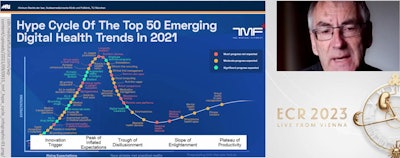 Analysis of the data takes much longer than the scans, according to Dr. Stephan Nekolla, PhD.
Analysis of the data takes much longer than the scans, according to Dr. Stephan Nekolla, PhD.Notably, Nekolla explored the use of ChatGPT to arrive at a position statement for the debate and said it took just 10 questions for the app to come up with a relatively balanced answer that read in part as follows:
"Some people may argue that the development of LAFOV PET/CT systems is an evolution rather than a revolution in medical imaging technology. This is because LAFOV PET/CT systems build upon the existing PET/CT technology, with improvements in detector technology and software algorithms that allow for longer axial field of view imaging," according to the app.
Nekolla agreed with that, and he added that modality has barriers to overcome before its widespread clinical use becomes a reality. For instance, based on his experience at TUM, scanning patients faster "is not working" simply because they don't have the technologists to handle increased volumes nor the radiologists to read increasing cases, he said.
Total-body PET/CT scans also produce a massive data volume and processing demands, Nekolla noted. Analysis of the data takes much longer than the scans, and many clinicians may not perform dynamic imaging simply because of the time required for the analysis, he said.
Ultimately, imaging specialists should not celebrate "the machine," but rather its applications to improve diagnostic performance, and this happens on a step-by-step basis, Nekolla said.
"I'm not convinced we need super-large and super-expensive systems to do this. Basically, if we take what we have and take the systems we understand and feed in our brains, I think the advantages are significantly higher," he concluded.
The delegates' vote
In closing, Beyer surveyed the crowd again with a question, "Is total-body and long axial field-of-view PET/CT an imaging revolution?" Out of 26 attendees who voted at the beginning of the discussion, 74% voted "pro" and 26% voted "con." At closing, 56% voted "pro" and 44% voted "con."
Given that, perhaps total-body PET/CT could best be described "as a technical evolution that has the potential to turn into a clinical revolution," Beyer concluded.




